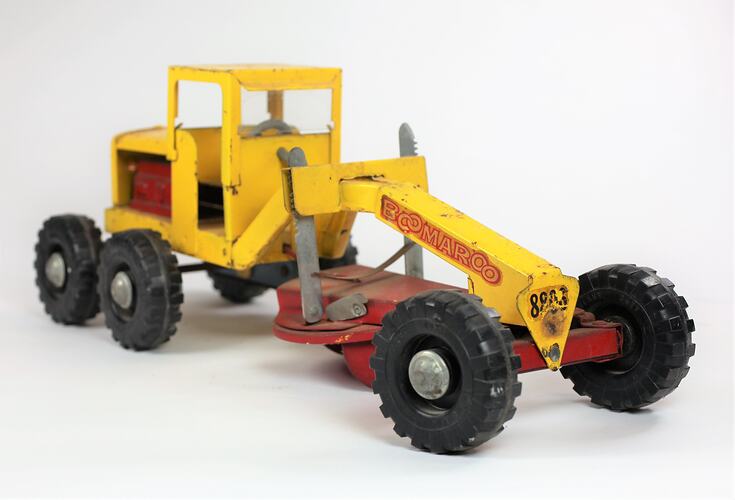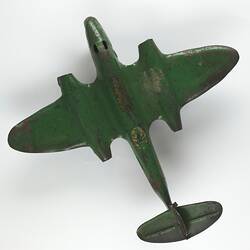The Boomaroo toy-making company was created by Hugh Watt Findlay (1908-1996), the son of Scottish migrants, born in South Africa then moving to Australia shortly after. Hugh Findlay suffered Scarlet Fever as a child and was rendered almost totally deaf for much of his life.
The first toys produced by Findlay under the Boomaroo name were released to the market in August 1946, a time when toys were unable to be imported due to the economic restrictions of wartime tariffs. Coupled with the drive to create jobs in Australia, many factories of the time served doubly in making both war munitions and children's toys, filling the gap where such toys were previously imported from Japan, Germany, France, America, and Czechovlakia. (1)
During the post-war boom of the 1950s Boomaroo Toys was producing more than 200,000 toys a year. By the mid-1960s Boomaroo had moved out of the backyard toymaking industry that was common for the time and became associated with Artlay Manufacturing Company, Boomaroo toys there-on being produced in Artlay factories. The Boomaroo toy company becoming became a member of The Australian Games Manufacturing Association, (TAGMA). Boomaroo continued to produce toys from the end of World War II up until the 1960s when the company ceased trading. The Boomaroo name would return between 1973 and the 1980s, trading alongside other iconic Australian toymaking brands Wyn and Hercules under the Tri-Ang Hornby company, better known for their production of railway models. (2)
Boomaroo primarily made toy cars, trucks, and construction machinery, with occasional instances of producing more generic toys such as 'pop guns', as well as fully-functional toy washing machines and cash registers. Boomaroo toys stand out from other Australian-made toys of the time due to their high-quality standards of construction, safe construction materials, and accuracy in reproducing the design and technical specifications of contemporary vehicles and machinery of the day. Boomaroo's late 1950s marketing and advertising material, written primarily for distributors and retailers, focuses greatly on this aspect of Boomaroo products, highlighting their "durability and smart appearance" (3) and made "Just like the real thing". (4) More than 60 years on, many collections feature toys in excellent condition due to their simple designs, heavy-gauge steel construction and baked-enamel paint, an expensive and uncommon material in children's toys of the day.
After retiring, Hugh Findlay went on to take up sailing, name his yacht the Boomaroo and participated three times in the Sydney to Hobart yacht race. The Boomaroo name now lives on through Boomaroo Plan Management, an NDIS support business owned and operated by Hugh's grandchildren, inspired by his lifetime of achievement in the face of adversity and disability. (5)
References
(1) PIX Magazine. (28 December, 1940). PIX Magazine. Associated Newspapers Ltd. https://nla.gov.au/nla.obj-421662304/ accessed 17 August 2023.
(2) Model Railways Engineer (2023). The Tri-Ang Company History. https://modelrailwayengineer.com/triang-history-rovex-lines-company/
(2) Boomaroo Products Pty Ltd (1957). The New Boomaroo Range * Every Toy a Winner!. Catalogue.
(3) Australasian Sportsgoods and Toy Retailer (May 1967). Advertisement. Page 6.
(4) Boomaroo Plan Management (2023). Who We Are - Boomaroo Plan Management. https://boomarooplans.com.au/about-us/
More Information
-
Keywords
-
Localities
-
Authors
-
Article types

